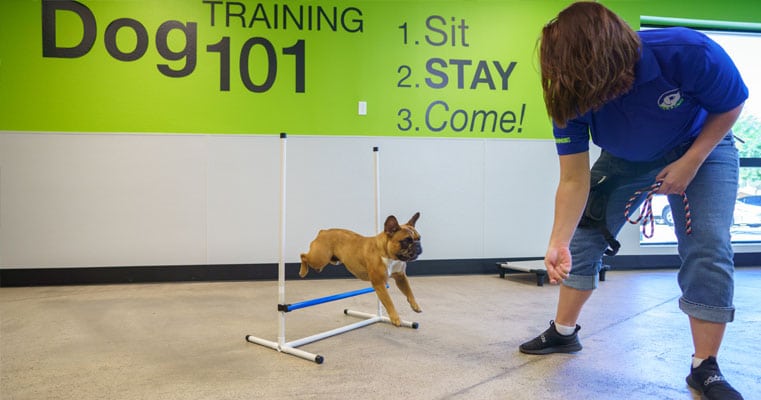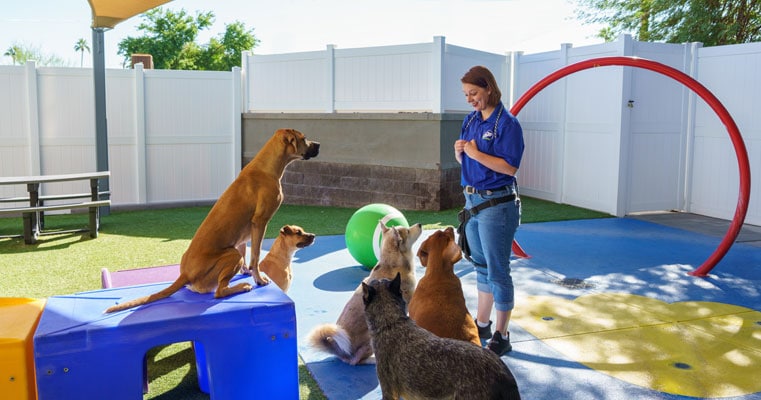Novice's Guide to Successful Pet Training at Home
Successfully educating a pet dog in the house requires a nuanced understanding of canine behavior and efficient communication approaches. Developing clear training objectives, using top notch incentives, and preserving uniformity across relative are vital components. Integrating training right into day-to-day regimens can improve both involvement and retention. Nevertheless, lots of amateur instructors experience obstacles that may hinder development. To browse these intricacies effectively, it's necessary to discover a number of key aspects that can transform your strategy and result in an unified partnership with your family pet. What basic principles should every beginner understanding to ensure success?
Recognizing Pet Dog Behavior
Recognizing canine habits is necessary for reliable training and cultivating a harmonious partnership between humans and their canine friends. Pet dogs interact primarily via body movement, vocalizations, and face expressions, making it critical for proprietors to translate these signals precisely. Recognizing actions such as tail wagging, roaring, or cring can give insights right into a pet dog's psychological state and purposes.

Usual behavioral issues, such as aggressiveness, anxiety, or extreme barking, commonly stem from misconceptions or unmet needs. Observing and addressing these issues immediately can avoid acceleration and make sure a favorable training experience. By promoting a deep understanding of canine habits, owners can customize their training methods to suit their canine buddies, inevitably causing a happy and mannerly family pet.
Crucial Educating Devices
A well-appointed training area can substantially enhance the performance of pet training at home. Important training tools make sure that both the dog and the trainer can take part in productive sessions that promote knowing and bonding.

Investing in a durable leash and a comfy, well-fitting collar or harness is essential for security and control. These devices assist establish boundaries and ensure the pet stays protected during training. Furthermore, a marked training location, cost-free from disturbances, aids concentration for both the trainer and the dog.
Training aids such as training pads, cones, or dexterity tools can likewise boost the experience by presenting selection and obstacles. Last but not least, having a note pad or digital application for tracking development can be vital, allowing you to note successes and locations for improvement. Using these crucial tools will create a positive training environment and lay the structure for reliable discovering.
Developing a Training Routine
Developing a regular training routine is crucial for reliable canine training at home. A well-structured routine not only assists in enhancing preferred actions but additionally gives your canine with a sense of security and predictability. To produce an effective training regular, begin by identifying certain training objectives, such as standard commands, leash walking, or house-breaking.
Choose an assigned time daily for training sessions, preferably when your canine is sharp and receptive. Sessions needs to be brief, about 5 to 15 minutes, to keep emphasis and prevent tiredness. Uniformity in timing and environment will certainly improve your dog's understanding experience.
Integrate training right into everyday tasks to strengthen skills. As an example, practice commands during strolls or nourishment, which incorporates discovering right into all-natural regimens. Additionally, continue to be flexible and adjust the routine as required, accommodating your dog's power levels and mood.
Positive Support Strategies
Favorable reinforcement techniques are essential to efficient canine i thought about this training, advertising wanted actions through benefits rather than penalty. This approach uses positive stimulations, such as treats, appreciation, or play, to encourage pet dogs to repeat certain activities. The cornerstone of this technique is timing; rewards ought to be offered right away following the wanted habits to produce a clear organization.
When applying favorable support, it is important to choose benefits that are motivating for your dog. High-value deals with, such as tiny pieces of hen or cheese, can be particularly reliable during training sessions. Furthermore, varying the benefits can maintain your pet dog's passion and excitement.
Start with easy commands, like "rest" or "remain," and progressively development to much more complex tasks. Consistency is crucial; ensure that all member of the family utilize the very same commands and incentive systems to stay clear of confusion.
In addition, it is crucial to remain person and avoid aggravation. Dogs, like people, discover at their own speed. By fostering an encouraging training environment via positive support, you can improve your pet's discovering experience while strengthening the bond between you and your fuzzy friend, laying the groundwork for successful training end results.
Usual Training Obstacles
While educating a dog in the house can be a fulfilling experience, it usually features a set of common challenges that can evaluate both patience and uniformity. One prevalent concern is disturbance. Pet dogs might become quickly averted by noises, motions, and even aromas in their atmosphere, making it tough to maintain their focus throughout training sessions.
One more challenge is inconsistency in commands and reinforcement. It can perplex the pet and hinder development if household participants make use of various hints or incentives. Developing a unified approach pop over to this site is important for reliable communication.
Furthermore, dogs can experience aggravation or tension, particularly if they do not recognize what is anticipated of them. This can cause unfavorable behaviors, such as chewing or barking.
Finally, the timing of support is crucial (Dog training). Postponed rewards can reduce the efficiency of positive reinforcement, as dogs might stop working to connect the actions with the reward
Getting rid of these obstacles calls for dedication, clear communication, and an organized training strategy. Recognizing and attending to these common challenges will lead the way for a more satisfying and effective training experience at home.
Conclusion
In verdict, effective pet training in your home demands an extensive understanding of canine habits and effective interaction approaches. By developing clear training goals and making use of high-grade treats alongside positive reinforcement, the training look here process becomes more gratifying for both the instructor and the dog. Persistence, versatility, and uniformity are vital components that assist in knowing. Ultimately, incorporating training right into everyday regimens enhances the bond between canine and owner, making the experience both efficient and satisfying.
Developing a regular training regimen is important for efficient canine training at home.Favorable reinforcement strategies are essential to efficient pet dog training, advertising wanted habits via incentives rather than punishment (Dog training). By fostering a helpful training environment with favorable support, you can improve your pet's knowing experience while enhancing the bond in between you and your fuzzy buddy, laying the foundation for effective training end results
In conclusion, successful pet training at home requires an extensive understanding of canine behavior and reliable interaction methods. By establishing clear training goals and using top quality treats together with positive reinforcement, the training procedure ends up being more gratifying for both the trainer and the dog.